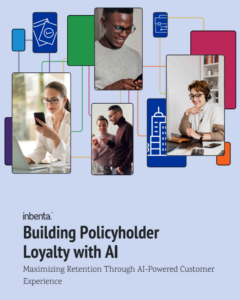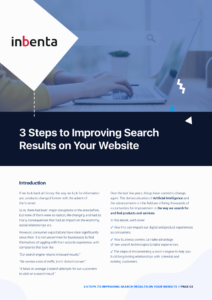How ChatGPT Will Revolutionize Conversation AI
In just a few months, ChatGPT has captured the interest of hundreds of millions of users and the imagination of businesses the world over. The Generative AI platform’s meteoric rise is understandable – a new and transformative AI tool capable of fixing code, responding to questions, writing emails and articles, and everything in between, is now widely available to the public.
The data used to train ChatGPT is also impressive — 45 terabytes of text data. By ChatGPT’s estimates, that is equivalent to around 30 billion eBooks. Plus, with hundreds of thousands of interactions daily, it is assumed that ChatGPT is continually improving its language model.
With players like Microsoft and Salesforce already looking to integrate ChatGPT’s capabilities into their workflows, it’s no wonder why demand for Generative AI is so high.
Given its popularity and potential, Inbenta, too, is often asked: how can businesses use Generative AI to achieve some commercial end? What benefits can Generative AI bring to customer experience more broadly?
Coding capabilities aside, the exact potential for Generative AI in a business context, used as a conversational tool, remains tentative. While Generative AI can help businesses instantaneously draft content and responses that can be used in a conversational setting, its client/customer- readiness is questionable.
ChatGPT has the ability to chat, i.e., answer questions and facilitate conversations with users.
But the accuracy and appropriateness of ChatGPT’s responses can pose risks for a business implementing ChatGPT, especially where brand voice and control is key.
To be fair, no large language model is perfect. When tested, ChatGPT has proven to have its own gaps and instances of bias. Examples of inaccurate and odd conversations have been well documented in the press reports on the topic, and can also be spotted after a few interactions.
There are also practical reasons why today’s version of ChatGPT isn’t ready for conversational tasks required by businesses.
First, ChatGPT may not be readily scalable. Businesses cannot spend hundreds of hours with a language model to ensure it is ready for their particular use case. Conversational AI tools need to be trained for a business use case and ready to use out-of-the-box.
Second, a language model alone won’t be able to sufficiently assist a user in the completion of personalized requests. For example, if a user wants to check their account balance or change purchasing details, the language model would be required to go beyond its original intention and be able to access account data, verify the user and accurately read off and / or act upon the request. These types of transactional integrations are widely seen among today’s Conversational AI tools, including the Inbenta Chatbot, but not within ChatGPT.
Third, businesses should require their Generative AI’s responses to be approved by their marketing, sales and legal teams. Off-topic and off-brand responses are not only a bad use of Conversational AI but should be vetted from a reputational perspective. (No business wants its chatbot engaging in lewd or offensive exchanges.)
If you were to ask ChatGPT what enterprise use case it supports, you would receive a list of five possibilities: customer service and support; content creation and marketing; language translation; data analysis and insights; and use as a virtual assistant.
The reality is that today’s ChatGPT can’t actually deliver these use cases in a way that is client/customer-ready without a significant amount of intervention by the business. Longer-term, however, it is easy to see how a more accurate, tested and connected Generative AI could be used to supercharge these tasks.
For now, Conversational AI designed for these specific customer-focused use cases are being deployed daily by businesses across the globe with positive results. It is important that businesses deploy AI responsibly. This includes approaching Generative AI with interest as well as with an appropriate degree of caution.








